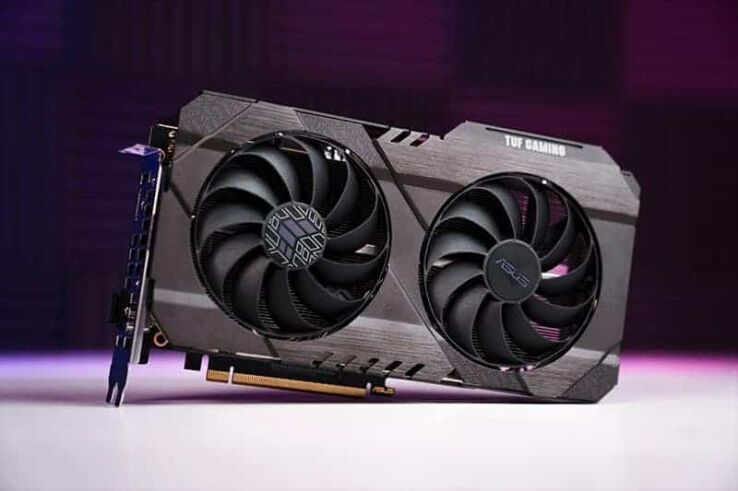Experts claim Nvidia’s “cost-cutting” measures mean you should probably skip the 4060 Ti
More outage relating to VRAM

WePC is reader-supported. When you buy through links on our site, we may earn an affiliate commission. Prices subject to change. Learn more
You should skip the 4060 Ti here’s why: The recent release of the Nvidia RTX 4060 Ti has generated overwhelmingly negative feedback since its reviews became available. The primary reasons for this unfavorable reception revolve around the target resolution, memory capacity, and pricing. However, the situation takes a turn for the worse, as Nvidia’s cost-cutting measures make it difficult to justify considering the 4060 Ti.
While the RTX 4060 Ti does possess certain positive aspects, it is challenging to give it a solid recommendation. Rather than providing another review, our focus will be on addressing the Vram and memory bus concerns surrounding this GPU. Here;’s why you should skip the 4060 Ti.
RTX 4060 Ti Vram and memory bus issues
The RTX 4060 Ti is available in two versions, one with 8 GB of GDDR6 Vram and the other with 16 GB of Vram. With the advancement of visual quality in games, 8 GB of VRAM may fall short of meeting the demands of modern titles. Therefore, Nvidia’s decision to offer a 16 GB variant is commendable. However, it raises the question as to why Nvidia couldn’t simply release a single version with an ample amount of Vram, without resorting to what seems like a money-grabbing strategy.
The RTX 4060 Ti 16 GB model is identical to the 8 GB version in every aspect, except for the additional 8 GB of Vram, which comes with a hefty $100 price increase. This approach by Nvidia appears to be another instance of them attempting to exploit consumers, making them pay a premium when manufacturing costs would be more than covered with a much lower RRP.
RTX 4060 Ti memory bus limitations
The 4060 Ti from Nvidia features a 128-bit memory bus width, which is a significant downgrade compared to the previous generation’s RTX 3060 Ti. This reduction is quite remarkable when considering the comparison. According to Linustechtips, you have to go back to the GTX 650 Ti, a GPU released in 2012, to find a similar memory bus interface.
Adding to the disappointment, Nvidia marketed this card as primarily targeting 1080p resolution, which is somewhat outdated in the industry for the past six years. On the other hand, AMD’s 6600XT, designed with a base focus on 1080p, delivered much more with FSR (FidelityFX Super Resolution) and surpassed the previous generation of comparable AMD GPUs.
RTX 4060 Ti’s increased L2 cache
However, amidst the concerns, there is a silver lining. Nvidia has assured users that the significantly expanded L2 cache will mitigate the drawbacks introduced by the narrower memory bus width. And credit is due to Nvidia as benchmark results on the 4060 Ti do support this claim.
Compared to the 4 MB L2 cache on the 3060 Ti, the RTX 4060 Ti boasts an impressive 32 MB L2 cache. According to Nvidia, this increased cache size enhances performance, reduces latency, and improves power efficiency.
While this may sound like typical marketing jargon, the idea behind it is quite compelling. By increasing the cache capacity, the GPU cores can access information stored in Vram less frequently, thereby minimizing the performance impact of the narrower memory bus width. However, one might still question why both aspects couldn’t be optimized simultaneously.
Is the RTX 4060 Ti a good choice?
The RTX 4060 Ti has garnered mixed reviews due to various factors mentioned earlier. Priced at $400, it offers only 8 GB of Vram, a limited memory bus, and relies on DLSS 3 for resolutions beyond 1080p. Alternatively, the 16 GB version costs $500, which is no longer considered entry-level and carries a $100 upcharge for a mere $30 of additional memory in the worst-case scenario.
There are other options available in the market that offer better performance for a similar (or slightly higher) price. While the 4060 Ti demonstrates efficiency, performs well in ray tracing compared to its predecessor, and boasts a powerful DLSS component, it falls short in terms of value when compared to the 6700XT and 6800XT.
Furthermore, AMD appears to have a strong contender to rival the 4060 Ti with the upcoming release of the 7600XT. That’s why you should skip the 4060 Ti.
Final word
In conclusion, the Nvidia RTX 4060 Ti has received mixed reviews due to concerns about the target resolution, memory capacity, and pricing. While the 16 GB variant addresses the Vram limitation, the $100 price increase for a mere $30 worth of memory raises questions about Nvidia’s pricing strategy. The 128-bit memory bus width is a significant downgrade compared to previous generations and raises doubts about its suitability for modern gaming.
However, the increased L2 cache size in the RTX 4060 Ti shows potential for mitigating the impact of the narrower memory bus width. Benchmark results support Nvidia’s claims of improved performance, reduced latency, and increased power efficiency.
Despite its positive aspects, the RTX 4060 Ti faces strong competition from other GPUs, such as AMD’s 6700XT and 6800XT, which offer better value for a similar price. Additionally, AMD’s upcoming release of the 7600XT suggests a potential contender rival the 4060 Ti.
Considering these factors, it is difficult to wholeheartedly recommend the RTX 4060 Ti as a top choice, as there are alternative options that provide better performance and value in the market. That’s why potentially you should skip the 4060 Ti.